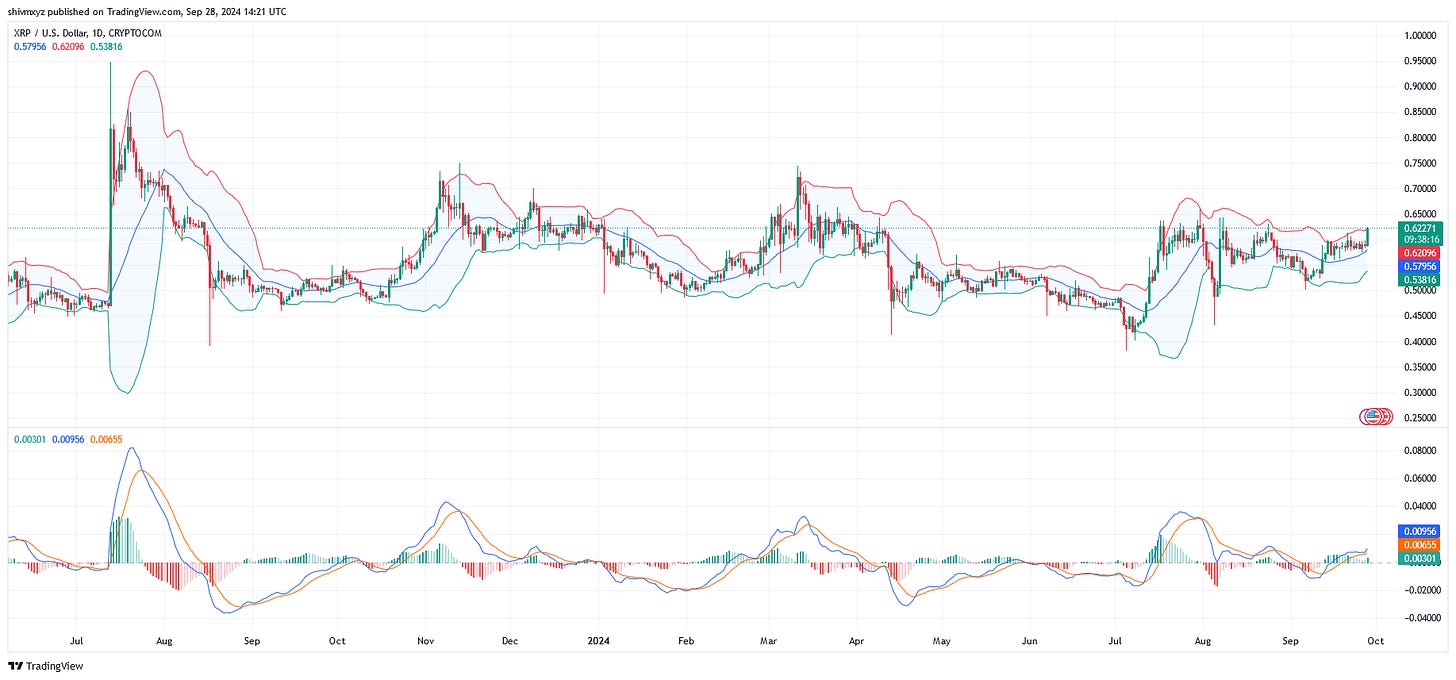XRP Rating Overview: Navigating Cross-Border Innovation Amid Regulatory Challenges
Unpacking XRP’s strengths in cross-border payments, its centralized risks, and the ongoing impact of regulatory scrutiny in shaping its future.
Asset Name: XRP (Ripple)
Overall Rating: A-
Tech/Adoption Grade: A
Market Performance Grade: B+
Key Takeaways:
XRP earns an A- rating due to its strong role in cross-border payments and its growing institutional interest, but ongoing regulatory challenges and centralization concerns weigh down its overall score compared to Ethereum and Bitcoin.
Why A-?
Cross-Border Payments: XRP's primary use case as a bridge currency in cross-border payments provides significant utility. Its RippleNet and On-Demand Liquidity (ODL) product have processed over $60 billion in transactions.
Technological Strengths: XRP offers faster transaction times and lower fees than Bitcoin and Ethereum, making it a strong contender in specific financial sectors. However, centralization risks related to Ripple Labs controlling much of the token supply dampen its decentralized appeal.
Institutional and Real-World Use Cases: Grayscale’s XRP fund, and Ripple's testing of the Ripple USD (RLUSD) stablecoin on XRP Ledger and Ethereum, add further credibility to the token’s adoption potential. Yet, competition from stablecoins and CBDCs challenges XRP’s positioning in the evolving landscape.
Regulatory Headwinds: Ripple’s ongoing legal battle with the SEC remains a significant overhang. While XRP is now more clarified in the U.S. market post-SEC ruling, broader regulatory clarity is still lacking.
XRP’s Core Strengths:
Technology
Fast and Scalable: XRP’s ledger can settle transactions in 4-5 seconds and supports 1,500 transactions per second, making it faster and more scalable than Ethereum and Bitcoin.
Bridge Currency: XRP’s role as a bridge asset in cross-border payments, leveraging RippleNet, continues to add real-world utility, particularly in emerging markets with illiquid currency pairs.
Adoption
Institutional Growth: Grayscale’s XRP Trust and Ripple’s partnerships with banks and financial institutions highlight growing institutional adoption. However, unlike Ethereum, XRP’s reliance on a single use case (cross-border payments) limits broader adoption.
Real-World Applications: RippleNet has attracted over 100 banks and payment providers. Still, adoption of XRP itself remains limited as many institutions can use Ripple products without transacting in XRP, which curbs its demand.
Risk
Regulatory Risk: Ripple's ongoing battle with the SEC over whether XRP is a security has cast a long shadow over its growth. The outcome could have far-reaching implications for XRP’s future.
Centralization Concerns: A substantial portion of XRP tokens is controlled by Ripple Labs, concentrating a significant level of control within a single entity. This raises centralization concerns, contrasting with the more decentralized structures of Bitcoin and Ethereum.
Momentum
Price Performance: While XRP’s price surged 8% following Grayscale’s announcement, its overall market performance remains volatile due to regulatory uncertainties. Competing stablecoins like USDT and USDC further reduce XRP’s long-term growth prospects.
Recent Developments Impacting XRP
Grayscale XRP Fund: Grayscale’s closed-end fund provides institutional exposure to XRP, a significant positive for market momentum.
Ripple USD (RLUSD) Testing: Ripple's testing of RLUSD stablecoin on both XRP Ledger and Ethereum diversifies its use cases, potentially increasing demand across decentralized finance (DeFi).
Ongoing SEC Lawsuit: Despite the regulatory headwinds, XRP is gaining traction in regions with clearer regulations, such as Europe and Singapore.
Outlook for XRP
Current Price: XRP is trading around $0.62. Ripple’s global expansion, continued innovation in cross-border payments, and stablecoin testing offer some upside. However, centralization and regulatory risks may cap further growth.
Final Thoughts:
XRP remains a strong contender in the cross-border payments space, with fast transactions and institutional backing. However, regulatory hurdles, centralization risks, and stiff competition from stablecoins limit its broader adoption potential, giving it an A- rating.
Disclaimer:
The Insight Labs Global Crypto Ratings is a forward-looking research system. Insight Labs or its analysts may hold positions in Bitcoin or other assets mentioned in the ratings. The information provided by Insight Labs is for educational purposes only. It is not intended to be, and should not be taken as, legal, tax, investment, financial, or any other form of professional advice.
Crypto products are unregulated and involve substantial risks, including complete loss of principal, pricing volatility, and inadequate liquidity. Insight Labs cannot guarantee the accuracy of the information provided and assumes no responsibility for decisions made based on this information.





